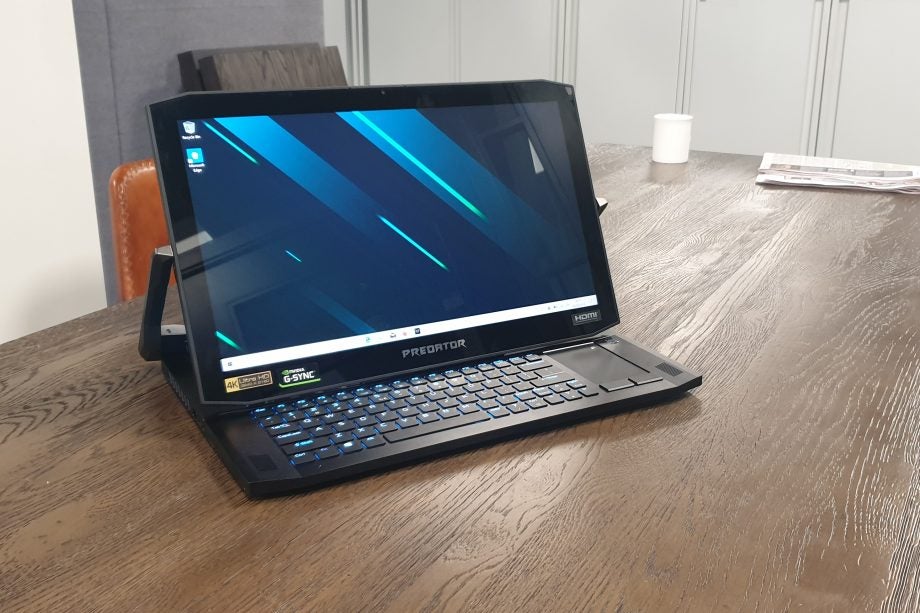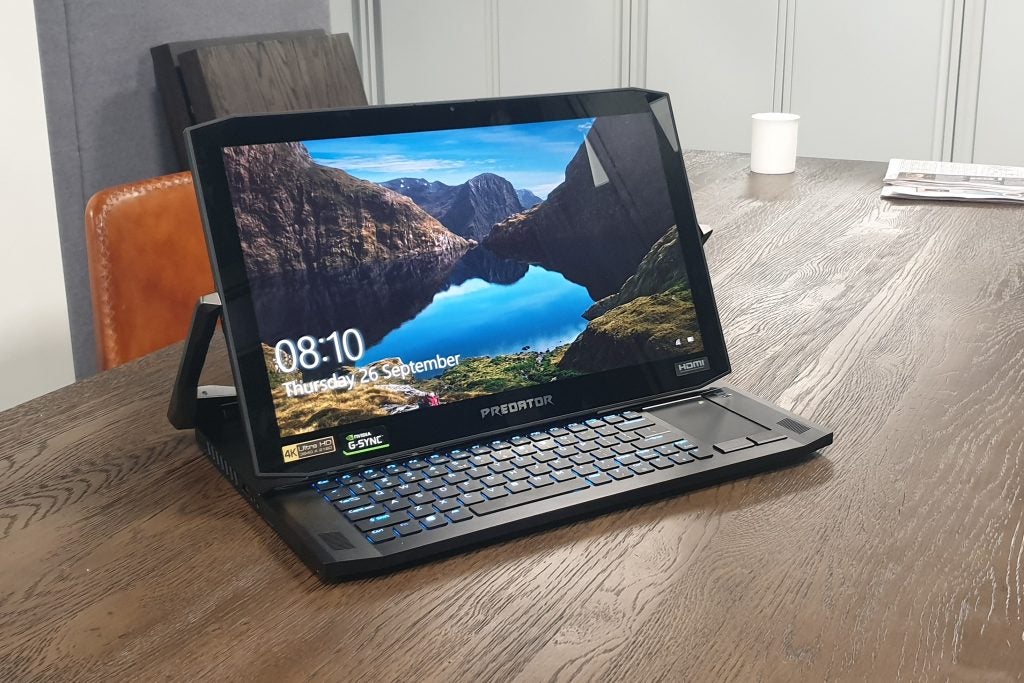Acer Predator Triton 900 Review - Display Review
Display
How good is the Acer Predator Triton 900’s display? Near-total sRGB and Adobe RGB coverage means games and photos look sensational Decent levels of brightness and contrast Strong viewing angles 60Hz refresh rate undermines gaming performance The Acer Predator Triton 900’s display is one of the best I’ve seen this year. It features a 17.3-inch […]

Sections
- Page 1 Acer Predator Triton 900 Review
- Page 2 Performance Review
- Page 3 Display Review
- Page 4 Battery Review
How good is the Acer Predator Triton 900’s display?
- Near-total sRGB and Adobe RGB coverage means games and photos look sensational
- Decent levels of brightness and contrast
- Strong viewing angles
- 60Hz refresh rate undermines gaming performance
The Acer Predator Triton 900’s display is one of the best I’ve seen this year. It features a 17.3-inch 4K Ultra HD (3840 x 2160) IPS LED screen that refreshes up to 60Hz.
Nvidia’s G-Sync variable refresh rate technology, which will attempt to ensure the RTX 2080 GPU outputs video at a rate close to the display’s top refresh rate, is also present. This is a key addition, since not all high-end gaming laptops offer G-Sync.
Colour space coverage is near-perfect here. Using DisplayCal and an X-Rite i1 Display Pro colorimeter, I recorded 99.8% sRGB coverage, and 99.5% Adobe RGB, as well as a 89.1% DCI-P3 score.
Those colour gamut coverage scores aren’t to be sniffed at; they basically mean that the Acer Predator Triton 900 can display a huge range of colours. Games will look vivid on this display and the colours of digital photographs will look deep, rich and natural.
sRGB (short for Standard RGB) is the standard colour space in which most web designers and digital photographers work, while the wider Adobe colour gamut is favoured by photographers, especially those looking to create prints of their work. This is because it covers a wider range of tones and shades, allowing for more natural-looking photos, and it matches what can be produced by most printers.
Photographers should be especially excited by these scores. Indeed, the 32GB of RAM and powerful RTX 2080, with 8GB of GDDR6 RAM, means that opening and editing several photos at once is effortless. Were it not for the fact that the Acer ConceptD 9 and ConceptD 9 Pro are waiting in the wings, I’d recommend any budding photography student with a healthy credit score consider buying one of these.

The Triton 900’s display is one of the best Trusted has tested this year, boasting high colour space coverage and great viewing angles.
Using the same software and hardware, I recorded maximum brightness reading of 351.12 nits. This is a solid result, but it isn’t the brightest display we’ve seen at Trusted.
The MacBook Pro 13-inch unit I tested last year offered peak brightness of 514.1 nits, while the Microsoft Surface Studio 2 and Apple iMac 2019 set the bar at 541.73 and 515.3 nits of peak brightness respectively.
All of these devices are designed with content creation in mind, and aren’t gaming machines, so perhaps the comparison isn’t wholly fair. But as I say, the Triton 900 could comfortably stand in as a creative hub. For gaming laptops, typically hobbled by dull displays, 350 nits of max brightness is pretty good.
A black level of 0.32 perhaps isn’t great – in an ideal world, every display would give you a black level of zero. This result combines with the max brightness for a contrast ratio of 1070:1, which is par for the course these days.
Excellent colour reproduction means that nothing really looks overblown and washed out on the Triton 900, nor do any dark areas look especially murky. The colour temperature I recorded at full brightness – 7061K – is a little on the cool side, straying from the neutral 6500K sweet spot. No photos, web pages, or games looked blueish or overly cold – to a casual glance, at least.
The glass coating means that any benefits of Acer’s ComfyView anti-glare coating might be lost if you’re playing or working somewhere with harsh overhead lighting.
Speaking of coatings, there’s no sugaring the fact the 60Hz maximum refresh rate is a negative. This is a point I’ve perhaps laboured in this review – but still, as good as games look here, the action might not be as fast as you like.
With no information from Acer about response times – and the lack of a video signal input lag tester to hand – it’s impossible to pin down the responsiveness of the Triton 900’s display. Acer said the Helios 700’s display had an overdrive response time of 3ms, so it could be that the Triton 900 matches this.
Overall, though, the Acer Predator Triton 900’s display is seriously impressive, and by a long way one of the best panels found on a gaming laptop.


